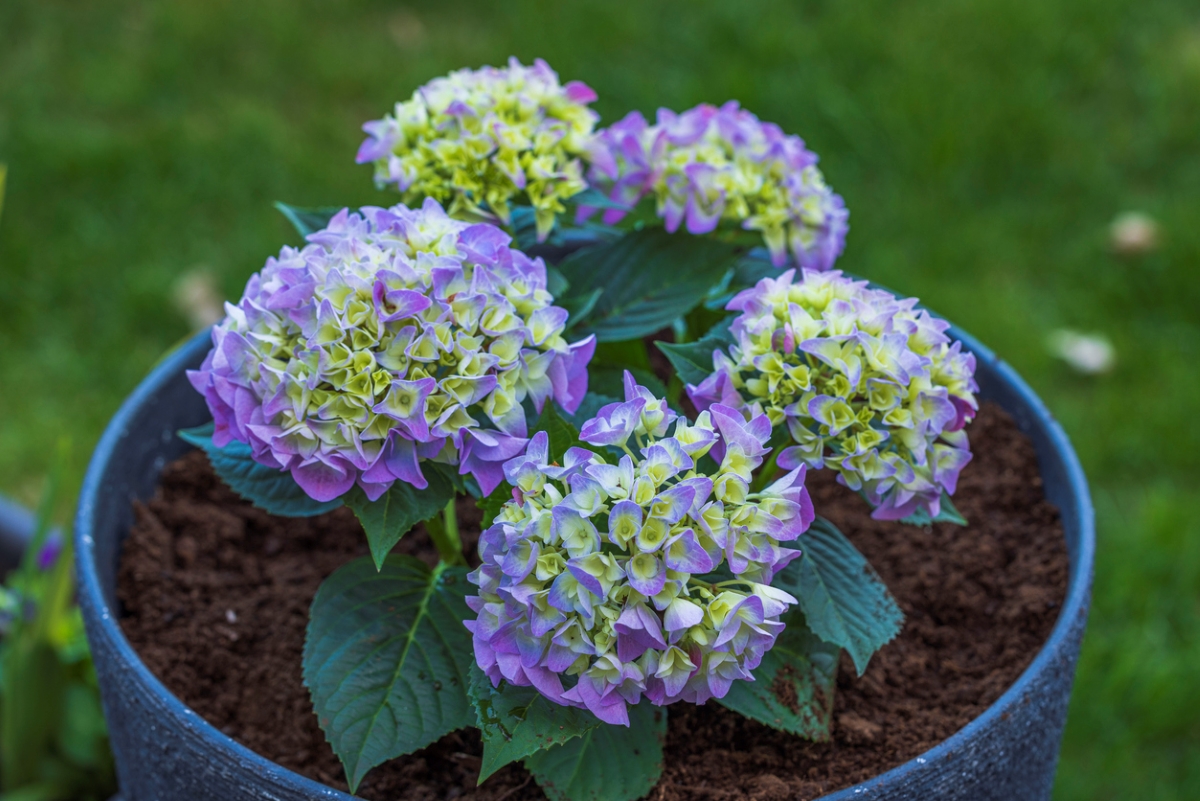

We may earn revenue from the products available on this page and participate in affiliate programs. Learn More ›
Can hydrangeas grow in pots? Many of these shrubs (some called snowball bushes for their spherical heads of blooms that are ideal for drying) are too large to be contained easily, growing from 10 to 20 feet high. However, dwarf and low-growing hydrangea varieties can thrive in pots.
If you intend to leave your hydrangea outdoors year-round, though, you’ll need to pick a very hardy cultivar, provide it with a frost-proof container and keep the shrub well-watered. Otherwise, it won’t have a snowball’s chance in you-know-where of surviving!
RELATED: 22 Shrubs That Can Handle the Heat of Full Sun
Potted Hydrangea Characteristics
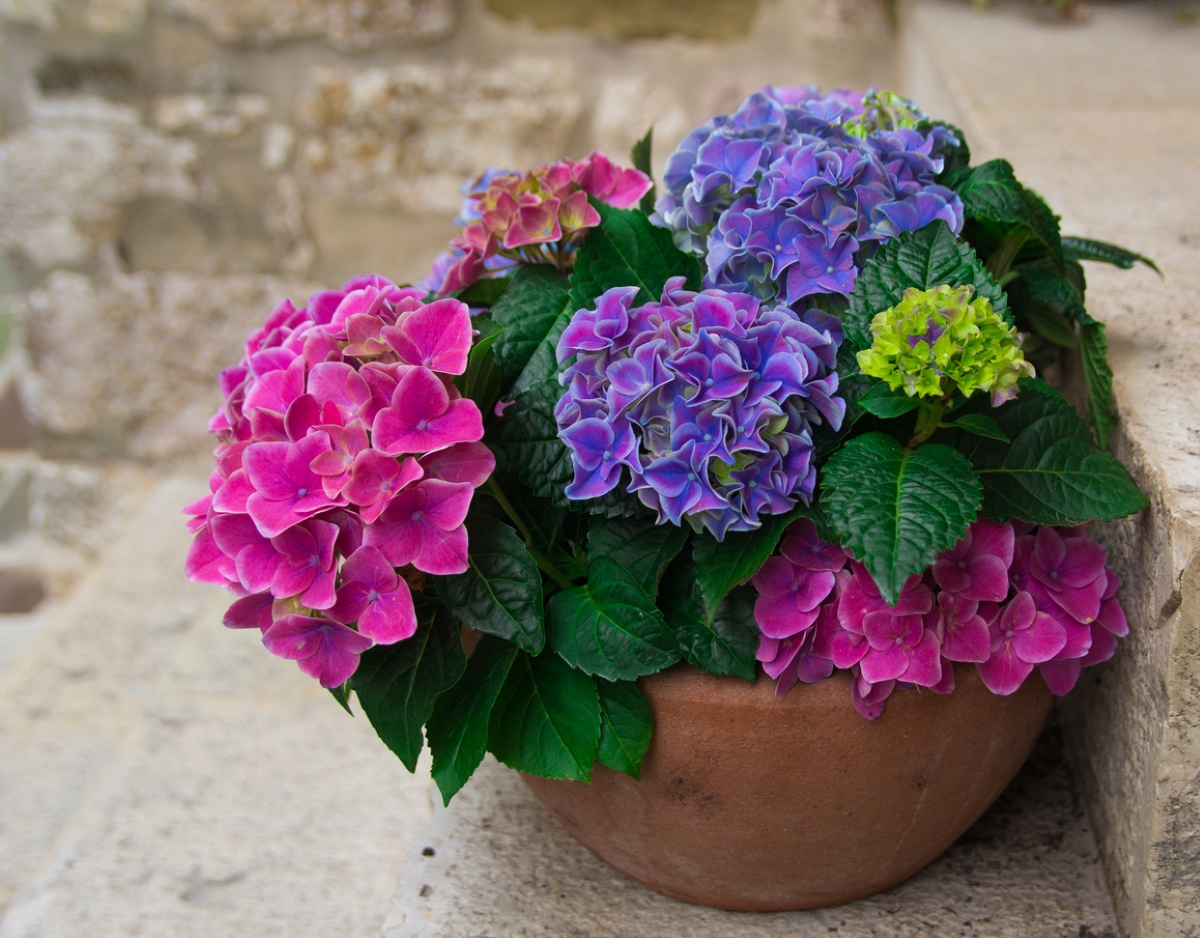
How big do hydrangeas get? These shrubs vary in size, from dwarves that don’t reach 2 feet to giants which can tower 20 feet tall. Their rounded flowerheads, which bloom in summer and/or autumn, are made up of either large sterile blooms composed of sepals, tinier fertile flowers, or (as seen in lacecaps) a combination of the two. The blooms vary in color from white to pink, red, and blue, with white varieties often aging to chartreuse.
For the longest season of bloom, choose repeat-blooming hydrangea varieties like Endless Summer. When learning how to care for potted hydrangeas, you’ll need to know whether yours flowers exclusively on old wood or new wood—or both. If you intend to leave the plant in its container all year, select a cultivar that is hardy at least two USDA hardiness zones colder, or lower, than your zone.
Recommended Hydrangea Varieties for Containers
- Hydrangea macrophylla Cityline ‘Paris’: This pretty Parisian only grows 2 feet tall and features red blooms.
- Hydrangea arborescens Invincibelle ‘Wee White’: This rebloomer only grows about 2 feet tall and 2 feet wide, boasting heads of small white flowers.
- Hydrangea macrophylla ‘Pia’: Topping out at 3 feet tall and wide, ‘Pia’ produces mopheads of pink flowers which can be “blued” with an acidifier.
Planting Hydrangeas in Pots
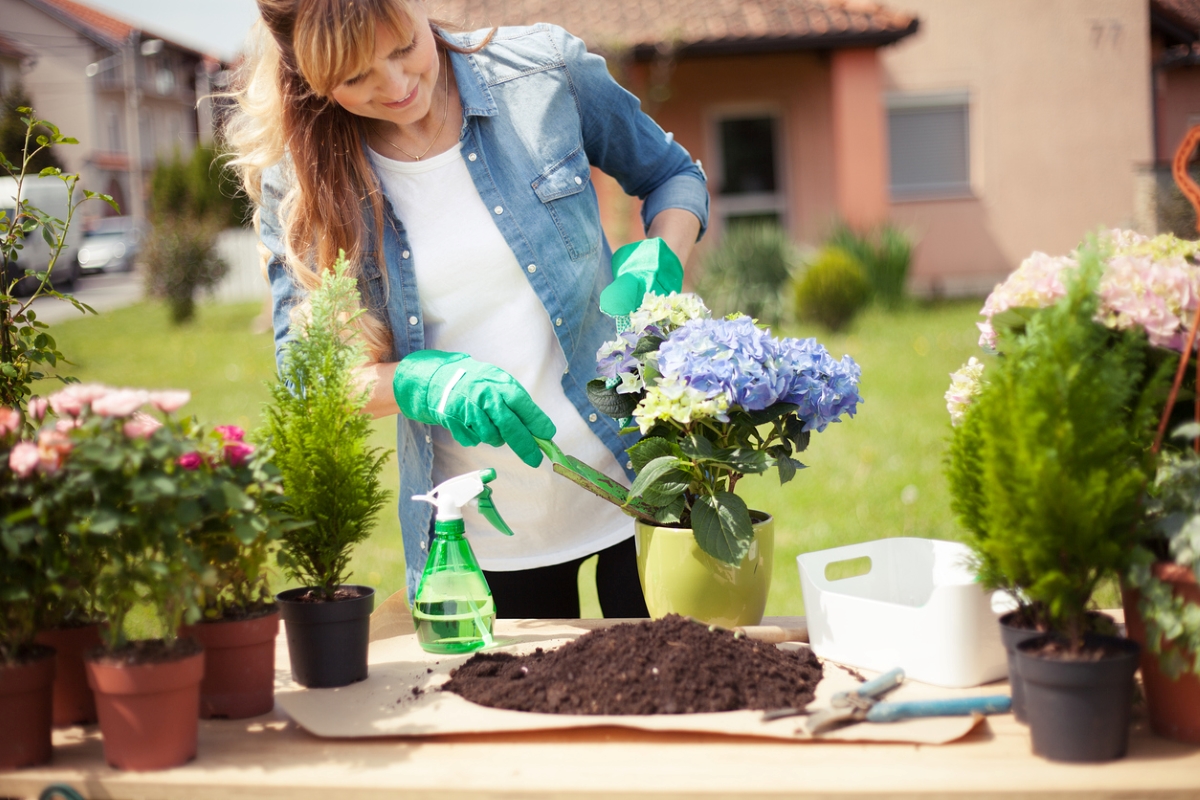
A hydrangea can last for 3 to 5 years in a large container before needing to be transplanted into the ground or an even bigger pot.
When is the best time to plant hydrangeas in containers?
Plant hydrangea just after your last frost date in spring. If it is a florist’s type that you received as an Easter gift, make sure that it is hardy to your zone before you attempt to establish it outdoors. Choose a pot or tub at least 16 to 24 inches in diameter that has drainage holes. Avoid terracotta or ceramic types, which may crack under winter conditions.
Where can potted hydrangeas grow?
Because it will be heavy after it is filled with soil, the container is best placed in its intended location before filling it. You may also want to set it atop a plant caddy with casters to make it easier to move. Select a position that receives sun during the morning and shade during the afternoon.
How do you plant hydrangeas in containers?
When growing hydrangeas in pots, cover the containers’ drainage holes with screen mesh or another porous material such as coffee filters.
- Fill the pot or tub to within 3 inches of its rim with an organic potting soil; be sure the mix has 20 to 50 percent compost.
- Dig a hole in the mix large enough for the root ball of your plant.
- Water the shrub well before removing it from its original pot, untangle the roots if necessary, and plant it in the larger container so that the top of its root ball rests level with the soil surface.
- After watering the mix in the new container, add 2 inches of mulch to the top of the mix to help retain moisture.
Watering Potted Hydrangeas
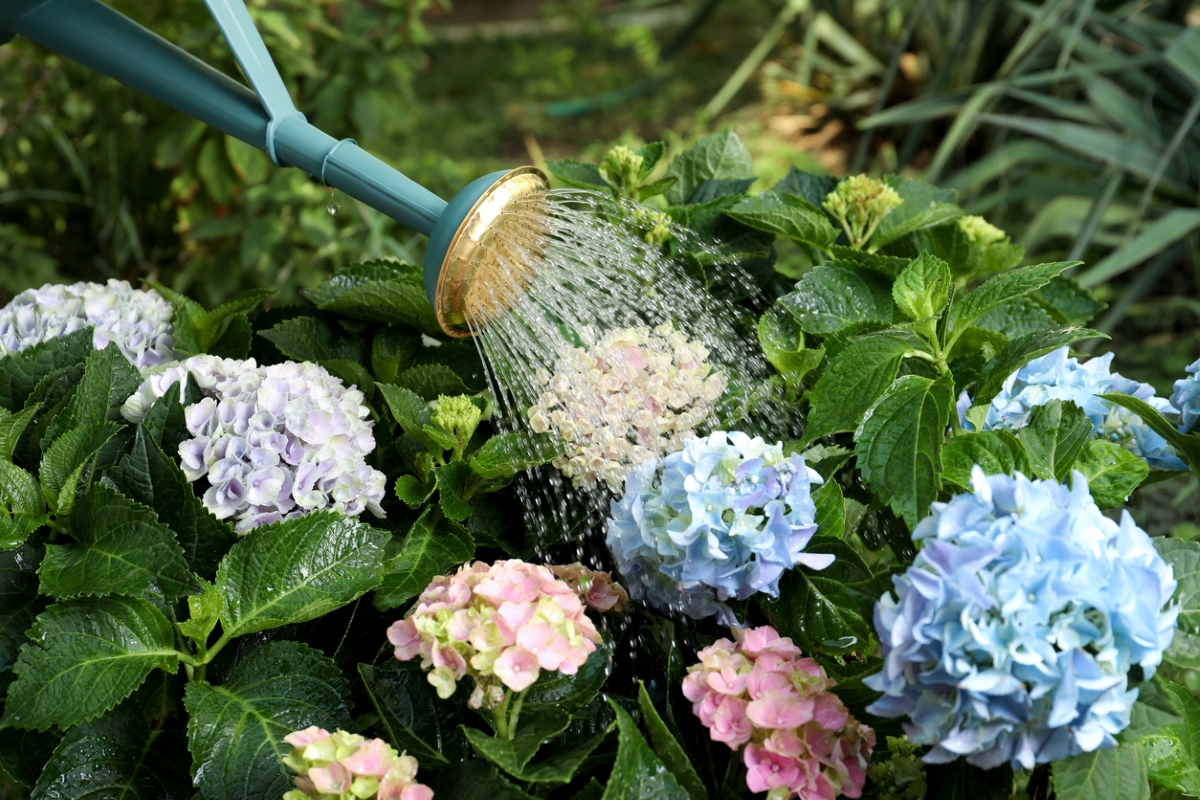
When watering hydrangeas in pots, wait until the top inch of soil in each pot is dry before watering the soil thoroughly enough that water trickles out of the drainage holes at the bottom. (If you have mulched the plant, reach under the mulch to determine when the surface of the soil is dry.) Hydrangeas in pots dry out more quickly than in-ground plants, and the potted shrubs may need water as often as twice a day during the heat of summer to prevent them from wilting. If your plant is dying, lack of sufficient hydration may well be the cause.
Fertilizing Hydrangeas in Containers
Compost for hydrangeas feeds the shrubs and helps retain moisture. Add it to the soil when you pot the plants, so it makes up 20 to 50 percent of the blend. For hydrangea fertilizer, choose an organic type intended for acid-loving plants such as 4-3-4. Scatter it into the soil at the base of the plant, following the directions on the bag. If you want blue blooms on a Hydrangea macrophylla cultivar, an important part of hydrangea care in pots will be adding a soil acidifier to the soil, at the rate indicated on its packaging, to control color.
Pruning and Propagating Potted Hydrangeas
Repeat blooming hydrangeas shouldn’t need pruning except for the removal of faded blooms or dead branches. Trim plants that flower only on old wood immediately after they have finished blooming. Cut them back just enough to keep them the size you want them for the container, and remove any dead or diseased wood. Avoid pruning these types after the beginning of August, since the hydrangeas should be making new buds for the following year by then.
You can wait until early spring to prune varieties that bloom on new wood. Cut their strong branches back by one-third to one-half their size and remove weak branches.
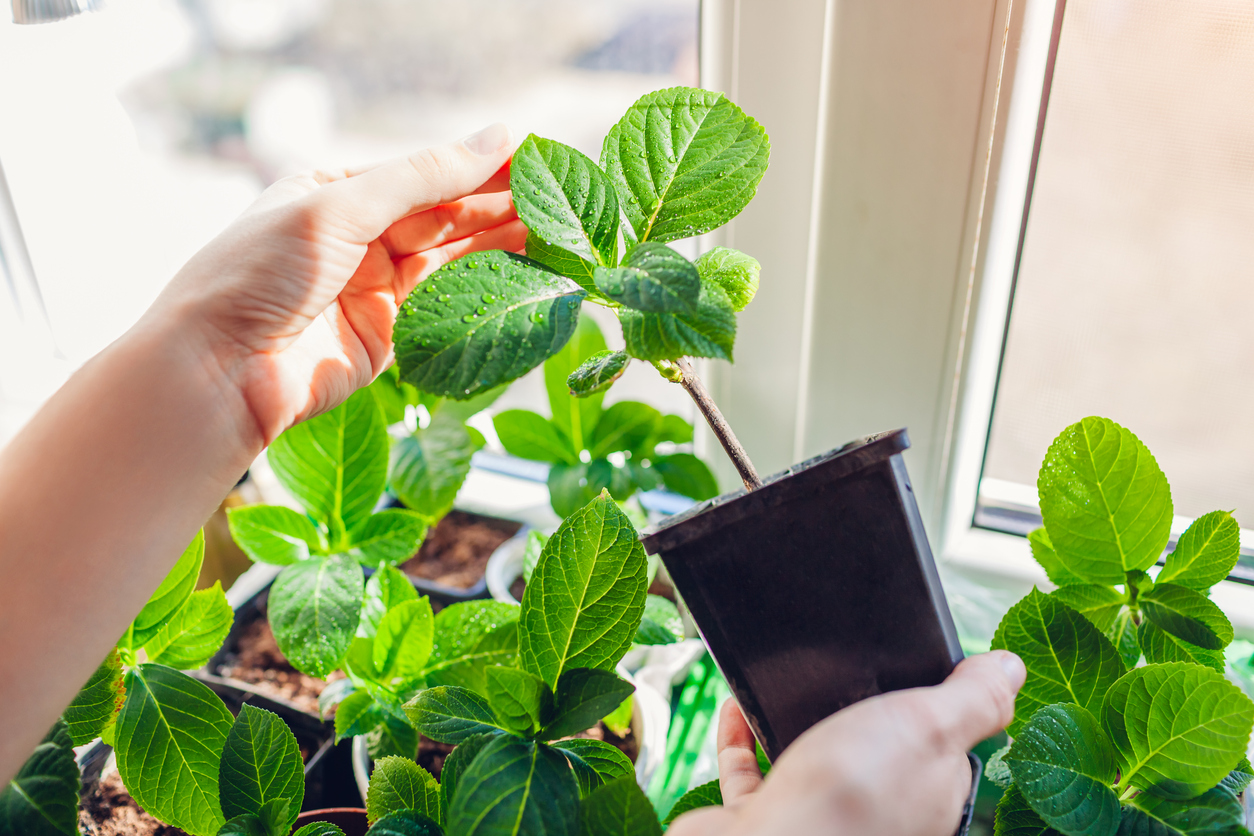
The easiest way to propagate a hydrangea is by layering during summer. Simply bend one of its branches down to the soil, peel off a 1-inch band of bark from around its stem, and bury that section so that about 6 inches of the branch’s tip protrudes from the soil. Your “cutting” then may remain attached to the parent plant until it roots and makes new growth, after which it can be cut free and dug up. Alternatively, try propagation by softwood cuttings or division.
RELATED: 20 Perennials to Plant in the Fall for Beautiful Spring Flowers
Potential Safety Concerns, Pests, and Diseases
Due to a cyanogenic glycoside it contains, all parts of hydrangea are toxic, according to the ASPCA. So you’ll want to inform your children that its “snowballs” are not edible. Consumption of the plant or its flowers can cause vomiting and diarrhea in people, pets, and livestock. Anyone with sensitive skin may also develop a rash from contact with some hydrangea varieties’ foliage or flowers, so they should wear gloves when handling or pruning the plant.
When considering how to grow hydrangeas in pots, note that you should avoid crowding them too closely with other plants. That could cause fungus diseases such as botrytis blight or cercospora leaf spot. Symptoms of blight include browning flowers and buds sporting a gray fuzzy mold, along with brown spots where the petals drop onto the leaves. Cercospora’s spots can be rusty red inside a tan ring, or gray ringed with purple.
To avert infections, avoid getting hydrangea foliage wet when watering the plants. You may also want to spray them regularly with a fungicide to prevent these problems.
Overwintering Potted Hydrangeas
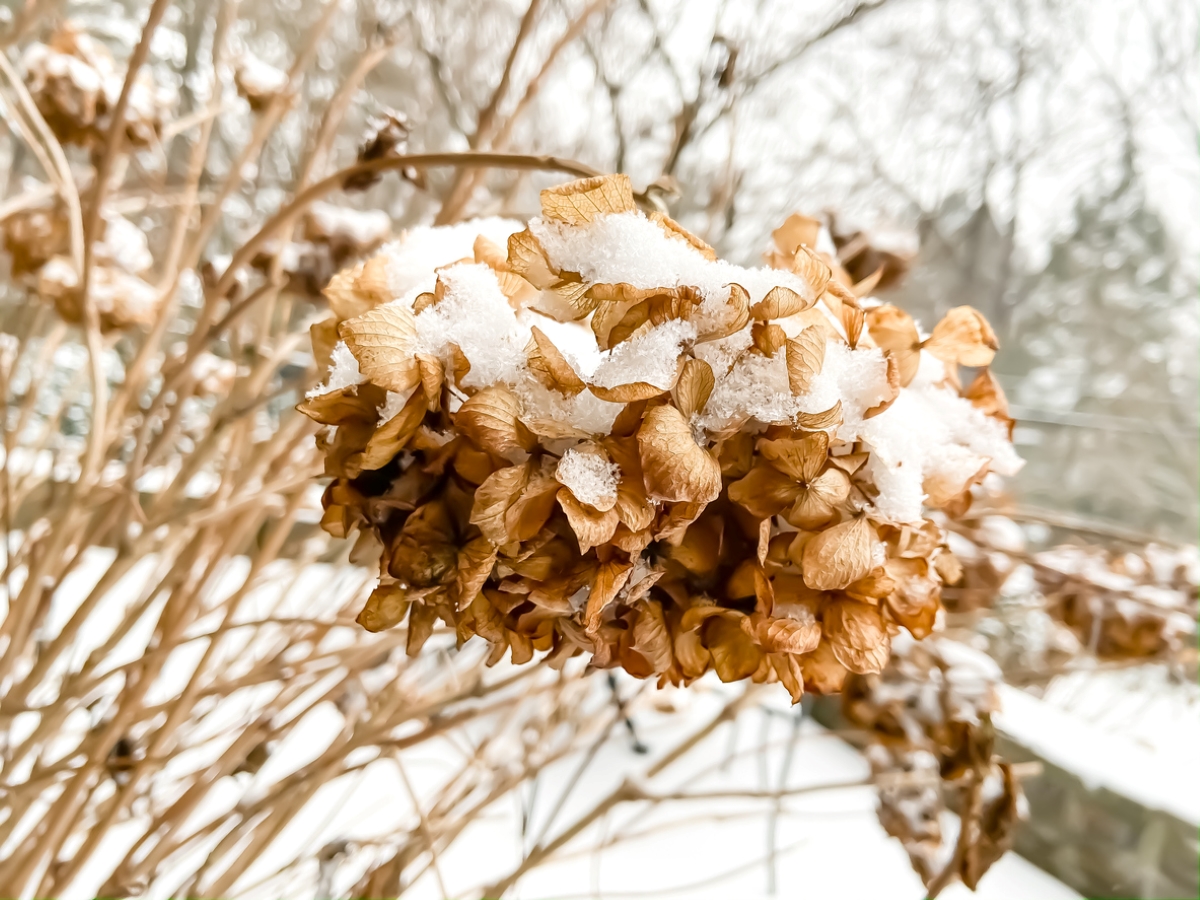
Potted hydrangea winter care will depend on the hardiness of the cultivar that you have chosen.
When is the best time to bring container hydrangeas indoors?
If, as was specified earlier, your plant is hardy at least two zones north of yours, you should be able to leave it out all winter. If it is hardy only to your zone, wait until after the plant has gone dormant in the fall before you take steps to protect it as follows.
How do you overwinter potted hydrangeas?
For the best results, either keep your hydrangeas outdoors or in a cold and protected position where they will remain dormant over winter.
- Before the ground freezes, dig a hole large enough to contain your hydrangea’s pot and bury the pot so the shrub it contains appears to be planted in the ground.
- Alternatively, wheel the hydrangea’s pot into a protected location such as a well-lit but unheated garage or shed.
- Set it atop a board or pallet to get it off of the floor or ground.
- Surround the pot with insulating materials such as bales of hay or straw.
- Whenever the hydrangea’s soil thaws, water it if it seems dry.
Looking for more shade-loving plants? Check out our guides on growing azaleas, coleus, and other shade lovers.
